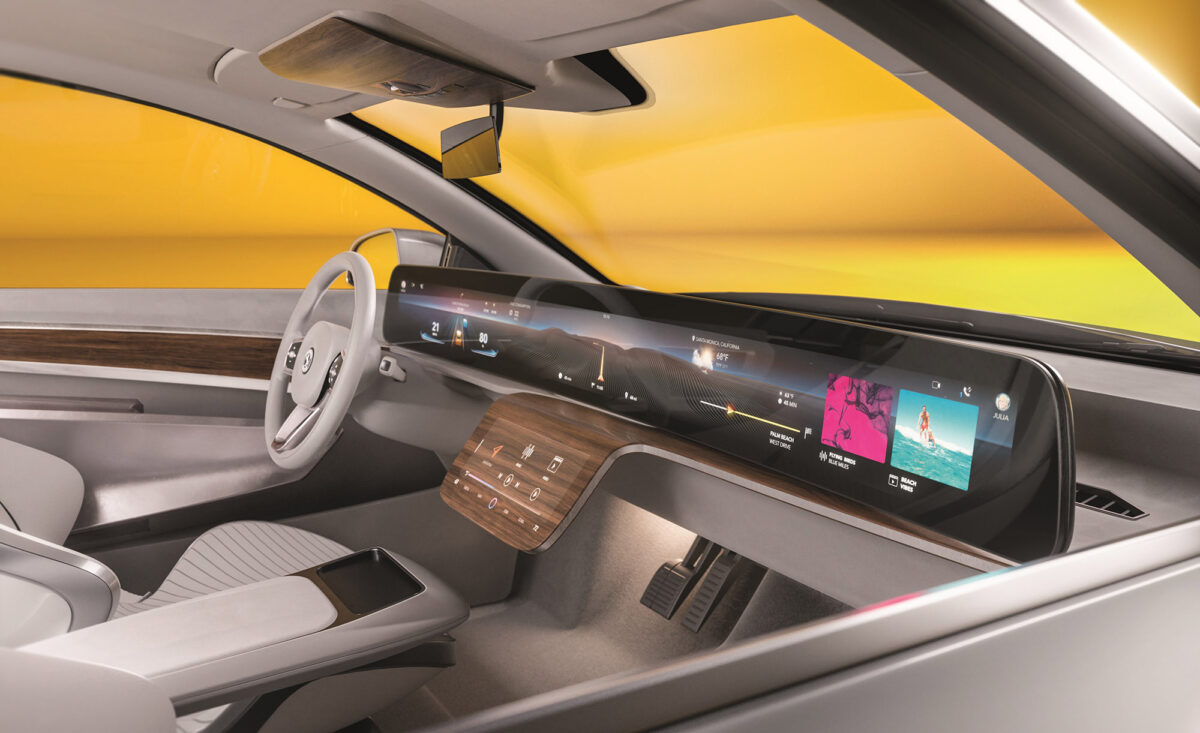Curved Auto Display Will Be Shown at Tech Trends in Paris

Continental says its Curved Ultrawide Display is world’s first pillar-to-pillar unit
Automotive parts manufacturer Continental AG, of Hannover, Germany, will display one of its latest developments, the Curved Ultrawide Display, at the
upcoming CES 2024 Tech Trends show in Paris, Sept. 20. The product is reportedly the world’s first curved, pillar-to-pillar auto display. It is 129 cm. (50.78 inches) long, replaces multi-screen displays, and presents driver and passengers with what the company terms “a seamless user experience” that is interactive and high resolution.
The display area itself is 120.65 cm. (47.5 inches) long. Images are powered by a TFT (thin-film transistor) display illuminated by more than 3,000 LEDs on a 7,680- by 660-pixel active area, which produces an 8K ultra-high-resolution image. Display data include vehicle speed, fuel consumption, weather updates and road identification. The display also includes infotainment titles which users access by touchscreen.
Control Technology Provides Haptic Feedback
The device features Continental’s In2Visible control surface technology, which is designed to provide haptic feedback for precise, easy and safe control of functions. When not in use, the display can be dimmed so it appears to merge into the instrument panel and become almost invisible. “This not only matches the display’s graceful design appeal,” Continental states, “but prevents superfluous information from distracting the driver.”
While a TFT display usually incorporates thin glass layers and other non-polymer materials, the rest of the device likely relies heavily on plastics for design features. (Continental did not respond to a request for details about materials used in the display in time for this post.)
However, as automakers continually work to reduce vehicle weight by greater use of plastics in a range of areas, including structural parts, a device as large as the Curved Ultrawide Display can be expected to make use of as much plastics as possible.
According to information from DuPont, approximately 16 percent of the weight in a vehicle is plastics, with a growing trend to possibly reach 25 percent within the next five years. Platform weight will play an important role in the performance and range of future vehicles, thereby promoting greater use of plastics.
